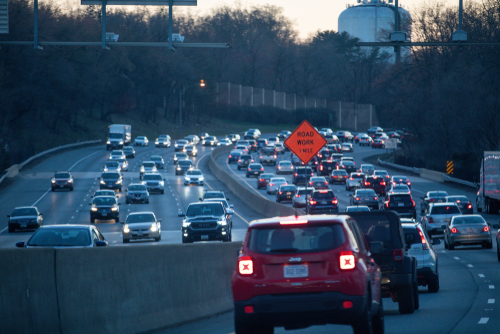
Maryland Gov. Larry Hogan (R) has an $11 billion investment plan to relieve traffic congestion in a state with one of the nation’s worst commute times, largely due to a ginormous bottleneck on Interstate 495 — locally known as the Capital Beltway — and I-270 in the Washington, D.C., metropolitan area.
“This transformative project is about finally moving forward and taking action on an issue that elected officials have literally ignored for decades,” Gov. Hogan said during a Maryland Board of Public Works (MBPW) meeting held Wednesday to act on the proposed project. “It will result in less traffic, more peace of mind, cleaner air, and a much better quality of life for hundreds of thousands of Marylanders for decades to come.”
The MBPW — comprised of the governor, treasurer and comptroller — must designate a project as a private-public partnership, or P3, and approve any contracts. The board on June 5 approved eligibility of Hogan’s Traffic Relief Plan for a P3 designation, allowing his administration to start soliciting and evaluating private investment for the project.
The plan is slated to be the largest highway P3 of its kind in the world, according to Hogan.
“It literally will determine the quality of life for Marylanders for decades to come,” he said during a recent meeting of Maryland Free, formerly known as Maryland Business for Responsive Government.
The governor first announced his multibillion-dollar traffic reduction plan in September 2017. In a nutshell, the plan would involve the Maryland Department of Transportation (MDOT) adding four express lanes to I-270, I-495, and the Baltimore-Washington Parkway. The widening would be paid for by the P3, which would develop, construct and manage tolls on these lanes.
John B. Townsend II, manager of public and government affairs for AAA Mid-Atlantic, said the MBPW 2-1 vote to green-light Gov. Hogan’s P3 proposal “represents a paradigm shift in the understanding of how roads and infrastructure will be funded in the state going forth.”
“It is a victory for motorists and commuters in the National Capital Area, who day-in and day-out endure the second-worst gridlock in the nation, and for Maryland residents who cope with the second-longest commute times in the nation,” Townsend told Transportation Today.
In its decision, the board delayed for two years the development of express lanes on the American Legion Bridge and the Capital Beltway in Maryland’s Montgomery and Prince George’s counties, where Townsend said officials effectively “have condemned the residents of the state’s two most populous counties to continue to mire in the nine concentric circle of hell that is Washington area gridlock at its worst.”
The first phase of the $11 billion project was supposed to be along the Capital Beltway from the American Legion Bridge over the Potomac River around to I-95. Hogan instead suggested a delay on that part and to prioritize adding toll lanes to I-270. The Beltway expansion in Prince George’s County, Md., will be finished last.
Townsend, who called many of the concerns voiced during the MBPW meeting from P3 objectors “on target,” said the delay does take their concerns into account.
But he added in an email that “it is a ‘Pyrrhic victory’ for elected officials in Montgomery County.”
Hogan acknowledged in tweets following the board’s action that this first phase of the P3 plan “has generated the most concerns from citizens and the strongest opposition from local Montgomery County elected officials who have asked that these much-needed road improvements be delayed.”
“Reluctantly,” said the governor, “we agreed to that delay and will instead move forward with improvements to I-270 as Phase One.”
Nevertheless, he remains undeterred.
“Our transformative traffic relief plans have received widespread support, advancing through 70 public hearings, workshops, meetings, & votes; earned praise from the Washington Post editorial board; & are supported by citizens who are sick & tired of spending hours in traffic,” Gov. Hogan tweeted on June 5.
And he pointed out in another tweet that the delay “allows a couple more years of input, study & debate and more time for citizens — and the hundreds of thousands of commuters who sit in that traffic — to convince local leaders that they desperately want to relieve congestion on the Beltway.”
According to Hogan’s office, each phase of the P3 project will come before the MBPW for separate votes, along with a completed environmental review for that phase.
And the P3 designation of the project specifically allows MDOT and the Maryland Transportation Authority to seek and evaluate the qualifications of private investors for the first of the program’s five construction contracts and to gather input on other potential solutions for traffic relief, his office said.